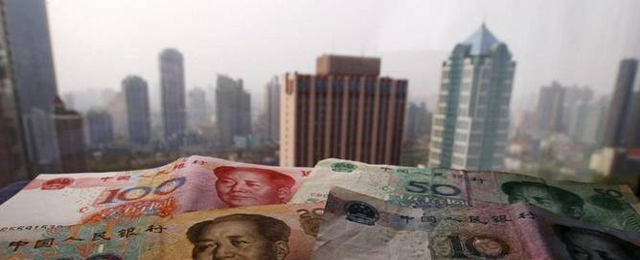Instead, I believe the Shanghai bourse presages a smooth transition at the upcoming Federal Open Market Committee (FOMC) and is guiding the opinions of global markets.
In October 2008, Shanghai was the first among all major markets to bounce off its historic bottom before the Fed announced the first round of quantitative easing. It then started to rally again in June 2010, way before QE2 speculation at Jackson Hole. In July 2011, Shanghai began to fall, anticipating the “twist” announcement instead of more QE. Finally, Shanghai closed in on its bottom in early September 2012, right before QE3. Of course, it is difficult to pin Shanghai’s performance down to one single factor; a lot has happened in the past five years. Nevertheless, it is a remarkable record. As such, Shanghai’s recovery augurs well for global markets.
China interest rates are closely correlated with those in the United States, especially on the longer end. The mechanism is transmitted through the yuan’s peg with the dollar, and the People’s Bank of China’s open market transactions. Recently, we observed that the U.S. Treasury yield has strengthened the most in the past five decades. The volatility of options on Treasury futures has surged concurrently. And the ratio between option volatility and historical volatility of Treasury futures has once again climbed to a level similar to October 2008, December 2010 and September 2011. That is, Treasury futures options seem to be over-discounting the probability of Armageddon. As such, yields in both the United States and China are likely to fall in the near term, after the strong surge.
Inside the Chinese Market
The Chinese stock market is concerned that a potential correction of the ChiNext, the growth board, will drag down the main board; that rising bond yields suggest tight liquidity; and that the nascent recovery may not be sustainable. These are valid concerns, and are making some hesitant.
The speculation on the ChiNext is also a reflection of the tight liquidity situation because it requires less money to buy up ChiNext stocks. But note that the forex fund position has turned positive, as opposed to the decline in June and July. And above we explained how bond yields will likely fall soon. As such, the liquidity condition will continue to improve, facilitating a style transition between growth and value. The ChiNext has largely decoupled from the main board, and has been rising on its own since March. A style rotation from growth to value simply means value will outperform growth, not necessarily value replacing growth. There is a key difference.
Some are also concerned that the inventory restocking cycle will be ephemeral. But the steel inventory is still close to a historic low and intention to produce is rising. We are also seeing low inventory levels across many other cyclical industries, consistent with the Purchasing Managers’ Index inventory reading staying below 50, as well as rising new orders. Further, the ratio of inventory to current assets has been falling. And so has the ratio of debt to assets. As such, economic data paints a picture of further inventory restocking ahead, more production to meet new demand and declining indebtedness; all of this is completely contrary to popular belief. In short, the nascent recovery can go on a little longer than thought.
The upcoming weeklong National Day holiday tends to strain China’s liquidity, as giving gifts, traveling and getting together with family all require cash. This is nothing unusual. Further, this period is characterized by slow trading with lower volume, a typical holiday effect. Such low trading volume, coupled with a few important global events, including the FMOC and the German election, will be conducive to market volatility.
(The author is managing director of BoCom International)
*Image by: by Steve Beam.
**Read the full article here.






Be the first to comment on "How Fed’s Tapering Will Affect China"